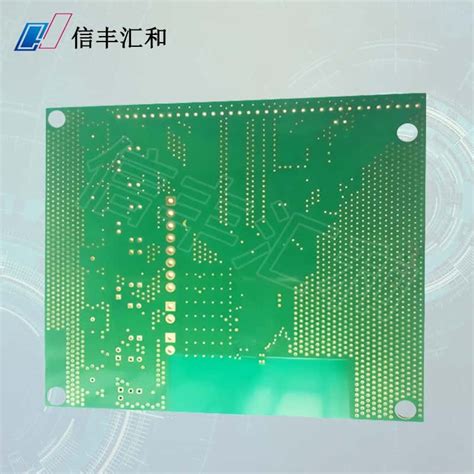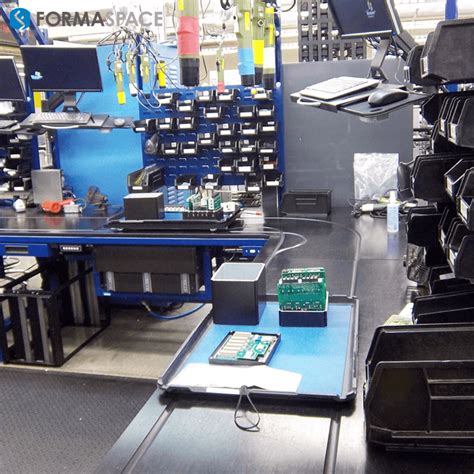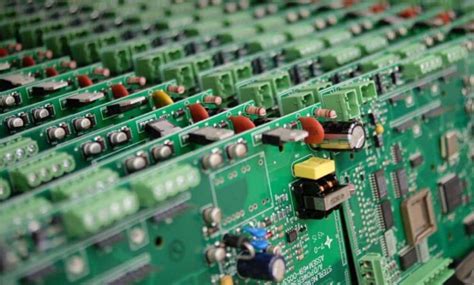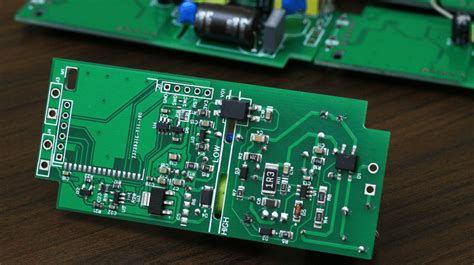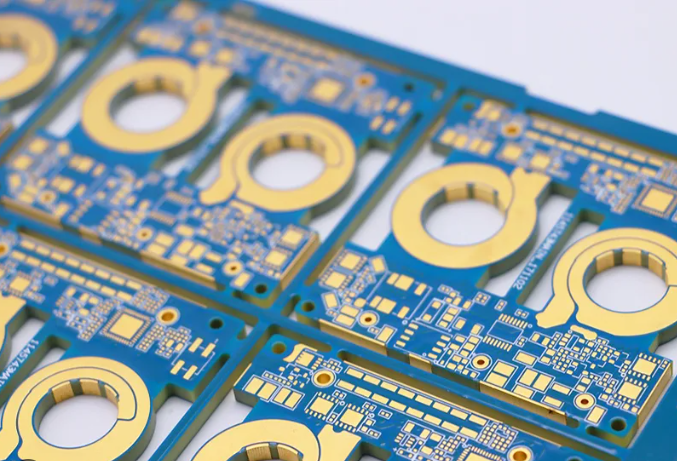Navigating the Future: Innovations in Aerospace PCB Assembly
Key Takeaways
The world of aerospace PCB assembly (PCBA) is continually evolving, driven by technological advancements and an unwavering demand for enhanced performance in flight systems. As innovative techniques emerge, they introduce new possibilities for improving the design and functionality of PCBA in aerospace applications. For instance, techniques such as modular assembly and fine pitch components allow for more compact designs while maintaining functionality. Additionally, the adoption of advanced materials is pivotal; materials like high-frequency laminates and flexible substrates are revolutionizing traditional approaches, enabling more robust and lightweight solutions. These materials not only enhance the reliability of aerospace systems but also contribute to significant efficiency gains during the manufacturing process. Furthermore, a strong emphasis on quality control measures ensures that every unit produced meets stringent industry standards, reinforcing safety in aviation technology. The integration of automation and artificial intelligence within the PCB assembly process further streamlines operations while reducing human error. As we explore future trends in aerospace PCB assembly, it becomes clear that a robust combination of innovation, advanced materials, and automated systems will shape a new era in flight technology management, promising enhanced performance and safety for aviation transport worldwide.
Introduction to Aerospace PCB Assembly: The Backbone of Flight Technology
In the rapidly evolving landscape of aerospace technology, PCB assembly plays a crucial role in supporting the intricate systems that enable modern aircraft to function safely and efficiently. The design and manufacture of printed circuit board assemblies (PCBA) are pivotal in enhancing reliability and performance, as they house the electronic components responsible for a myriad of flight control functions. As innovation accelerates within the aerospace sector, adopting advanced techniques in PCB assembly becomes increasingly essential. This not only ensures adherence to stringent safety regulations but also contributes to improvements in overall airline efficiency and operational cost-effectiveness.
Incorporating innovative materials into PCBA processes has led to breakthroughs that address challenges such as weight reduction and thermal resilience, both of which are vital for aerospace applications. Furthermore, embracing automation within production lines can significantly streamline operations, reduce human error, and enhance precision in assembly tasks.
“Staying at the forefront of technology is key for anyone involved in aerospace manufacturing; adopting these advancements can be the difference between success and failure.”
The synergy between these cutting-edge procedures establishes PCB assembly as an integral backbone of today’s advanced flight technology, ensuring that systems remain robust even under extreme conditions. This foundation not only supports existing aircraft but also paves the way for future innovations that will define the next generation of flight technology.
Innovative Techniques in Aerospace PCB Assembly
The aerospace PCB assembly process has evolved significantly, embracing innovative techniques that meet the rigorous demands of the industry. One such technique is the implementation of microvia technology, which allows for high-density interconnections and reduces the footprint of printed circuit boards (PCBs). This advancement is crucial for aerospace applications where space and weight are paramount. Additionally, the use of embedded passive components in PCBs streamlines designs by integrating resistors and capacitors directly into the layer material, thus enhancing performance while minimizing assembly costs.
Moreover, 3D printing technology is making waves in PCB assembly, offering unprecedented flexibility in design and rapid prototyping. This capability permits engineers to test and iterate on designs quickly, significantly reducing time-to-market for new aerospace systems. The integration of automation in the pcba (printed circuit board assembly) process has introduced precise placement and soldering techniques that enhance overall production quality while boosting efficiency.
Table: Innovative Techniques Comparison
| Technique | Advantages | Applications |
|---|---|---|
| Microvia Technology | High-density interconnections | Compact aerospace systems |
| Embedded Passive Components | Reduced space and costs | Streamlined PCB designs |
| 3D Printing | Quick prototyping & design flexibility | Rapid development cycles |
| Automation | Increased precision & efficiency | Mass production processes |
The incorporation of advanced techniques not only bolsters reliability but also ensures that aerospace technologies can adapt to emerging challenges, laying a solid foundation for future innovations in aerospace PCB assembly. As these methods continue to develop, they promise to further refine workflows and improve performance metrics in an industry poised for exponential growth.
Advanced Materials Revolutionizing Aerospace PCB Solutions
In the realm of aerospace PCB assembly, the integration of advanced materials is proving to be a game-changer. The evolution of printed circuit board assembly (PCBA) techniques involves the use of high-performance substrates that offer enhanced thermal stability and electrical reliability, crucial for aerospace applications. Innovative materials such as polyimide, which can withstand extreme temperatures and environmental conditions, are increasingly being adopted in PCB assembly processes. Additionally, the introduction of metal-core PCBs allows for more efficient heat dissipation, thereby improving the overall performance and longevity of critical systems. The use of lightweight composite materials not only reduces the weight of PCBA but also contributes to fuel efficiency and prolonged flight durations. Moreover, recent advancements in soldering technologies have led to more robust connections, minimizing the risk of failure in high-stress flight scenarios. By embracing these cutting-edge innovations, companies are not only increasing manufacturing efficiency but also ensuring that their products meet stringent aerospace standards. This shift towards advanced materials signifies a pivotal step in refining the aerospace industry, paving the way for safer and more reliable flight technology for future generations.
Enhancing Efficiency in Aerospace PCB Manufacturing Processes
In the aerospace industry, efficiency in PCB assembly is critical for ensuring the performance and reliability of flight technology. As the demand for more sophisticated electronic systems grows, manufacturers are continuously seeking innovative methods to streamline PCBA processes. One effective approach involves integrating advanced technologies that enhance production workflows. Techniques such as design for manufacturability (DFM) allow engineers to optimize designs, minimizing waste and improving throughput while adhering to stringent safety standards.
Moreover, the adoption of automated assembly solutions significantly reduces manual errors and speeds up production times. These systems can handle complex soldering tasks and accurately place components on printed circuit boards with exceptional precision. By implementing real-time monitoring systems, manufacturers can also gain insights into production metrics, enabling them to identify bottlenecks swiftly and implement corrective measures.
In addition, leveraging advanced materials such as high-frequency laminates contributes to creating lighter and more efficient boards that withstand extreme environmental conditions. The result is not only an improvement in operational efficiency but also an enhancement in the overall performance of aerospace systems. As innovations continue to emerge, focusing on optimizing PCB assembly processes can lead to groundbreaking advancements that shape the future of the aerospace sector.
Ensuring Reliability: Quality Control Measures in PCB Assembly
Quality control is a critical component in PCB assembly for the aerospace sector, where reliability and safety are paramount. Ensuring the integrity of printed circuit boards (PCBs) used in flight systems requires multi-faceted approaches throughout the PCBA process. The implementation of rigorous testing protocols, such as Automated Optical Inspection (AOI) and X-ray inspection, plays a significant role in identifying defects that might otherwise jeopardize the functionality of aerospace systems. Additionally, adhering to industry standards, such as those set by NASA and ESA, establishes a rigorous framework for evaluating the pcba processes. Moreover, the integration of real-time quality monitoring systems allows for immediate detection of errors during manufacturing, thereby enhancing overall output efficiency. By emphasizing defect prevention rather than detection post-production, aerospace manufacturers ensure that each component contributes positively to the overall performance and reliability of flight technology. These meticulous quality control measures not only bolster confidence in PCB assembly but also play an essential role in advancing the future of aerospace innovations.
The Role of Automation and AI in Aerospace PCB Systems
The aerospace industry is undergoing a transformation, with automation and artificial intelligence (AI) playing pivotal roles in enhancing the efficiency of PCB assembly processes. By integrating sophisticated AI algorithms, manufacturers can optimize PCBA designs, predict potential failures, and streamline production workflows. Automated systems can implement real-time quality checks, ensuring that every component adheres to stringent safety and performance standards. This level of precision is critical in aerospace applications, where even the smallest error can lead to significant consequences. Moreover, advancements in robotics are enabling high-speed manufacturing capabilities that not only reduce production time but also enhance the overall output quality of aerospace PCBs. As these technologies evolve, the future of PCB assembly will increasingly rely on intelligent systems that can adapt to complex design challenges and specifications unique to the aviation sector. By embracing automation and AI, companies are not only improving their operational efficiency but also laying the groundwork for innovations that will shape the next generation of flight technology.
Future Trends: What Lies Ahead for Aerospace PCB Assembly
As the aerospace industry continually evolves, pcb assembly techniques must also adapt to meet the increasing demands of innovation and safety. Future trends indicate a shift toward advanced automation and the integration of artificial intelligence in pcba processes, which promise to enhance precision and reduce manufacturing errors. Additionally, there is a growing emphasis on using sustainable materials that not only comply with stringent industry standards but also contribute to environmental considerations. The incorporation of smart sensors within pcb assemblies could allow for real-time monitoring of aircraft systems, further enhancing reliability and performance. Moreover, the rise of lightweight designs necessitates a reconsideration of traditional materials used in pcba, prompting manufacturers to explore new composites that offer both strength and reduced weight. These innovations are poised to shape not just the assembly processes but also the overall safety and efficiency of future aerospace technologies, paving the way for a new era in flight performance and operational viability.
Case Studies: Successful Implementations in the Aerospace Sector
In the evolving landscape of aerospace PCB assembly, several notable case studies highlight the effectiveness and transformative impact of innovative practices. One compelling example is a leading aerospace manufacturer that adopted advanced PCBA techniques to enhance performance while drastically reducing weight. By utilizing cutting-edge surface-mount technology combined with high-frequency substrates, the company achieved a remarkable improvement in signal integrity and efficiency. This implementation not only optimized the performance of onboard systems but also supported weight reduction, which is crucial for fuel efficiency in modern aircraft.
Another impressive case is observed in the realm of printed circuit board assembly for satellites. A collaborative project between defense contractors demonstrated how automation and machine learning could streamline pcb assembly processes, leading to reduced production time by over 30%. By integrating real-time quality monitoring systems into their manufacturing lines, they ensured that each PCBA met stringent reliability standards required for missions in challenging space environments.
These instances underscore how organizations within the aerospace sector are prioritizing innovative techniques and advanced materials in their pcb assembly processes. The successful implementations not only foster advancements but also serve as benchmarks for others in the industry, illustrating a commitment to enhancing overall performance, efficiency, and reliability, essential components that will shape the future of flight technology.
Conclusion
As we reflect on the advancements shaping the aerospace PCB assembly landscape, it’s clear that the evolution of PCBA techniques plays a vital role in enhancing flight technology. These innovations not only drive efficiency in production but also significantly improve the reliability of components used in aerospace applications. By adopting advanced materials and integrating automation, the industry is witnessing a transformation that promises to meet the increasing demands for performance and durability in challenging environments. Furthermore, ongoing research and development are set to introduce smarter solutions for pcb assembly, ensuring that future aircraft can leverage cutting-edge technology. The continuous improvement of PCBA processes, alongside stringent quality control measures, will help pave the way for safer and more efficient aerospace systems. As we navigate this dynamic field, the balance between innovation and reliability remains crucial, ultimately contributing to advancements that support our quest for more sustainable and efficient flight solutions.
FAQs
What is aerospace PCB assembly?
Aerospace PCB assembly refers to the specialized process of fabricating and assembling printed circuit boards (PCBs) that meet the stringent requirements of the aerospace industry. This includes ensuring durability and reliability under extreme conditions.
How does innovation impact aerospace PCBA?
Innovations in PCBA significantly enhance the performance and reliability of aerospace electronics. New techniques such as surface mount technology (SMT) and advanced soldering methods contribute to smaller, lighter, and more efficient designs.
What materials are commonly used in aerospace PCB assembly?
In aerospace PCB assembly, materials like high-frequency laminates, thermal management materials, and flexible substrates are utilized to improve performance and withstand harsh environmental conditions.
What efficiency-enhancing strategies are employed in PCB manufacturing processes?
Strategies such as streamlined workflows, automated machinery, and precise quality control measures play key roles in enhancing efficiency. These methods help reduce waste and optimize production timelines in pcb assembly.
How is quality ensured in aerospace PCB systems?
Rigorous testing protocols, including thermal cycling tests, vibration tests, and electrical testing, ensure that every pcb assembly meets the highest quality standards required for safety in flight applications.



